Top 10 Reasons To Choose Rubber Flooring in Dubai Homes...
Read More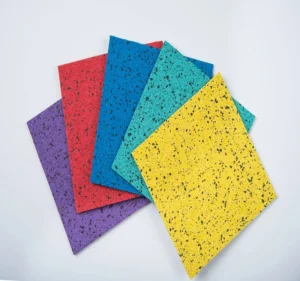
When people think about gym construction or adding onto the infrastructure of one, most of their first thoughts go to equipment, machines, and the layout. However, here’s the main thing: the ground under your feet is equally as important as the equipment you’re using. Best Gym floorings impact is greater than just looks – it’s also a safety factor, a performance factor, a comfort factor and yes, even a factor in the life span of your equipment. Unfortunately, many gym owners and fitness experts make common mistakes when Choosing a gym floor. In this blog, we’re taking a look at the top five mistakes to avoid when it comes to choosing your Gym Flooring so you can have a safe, long-lasting, and motivational workout space.
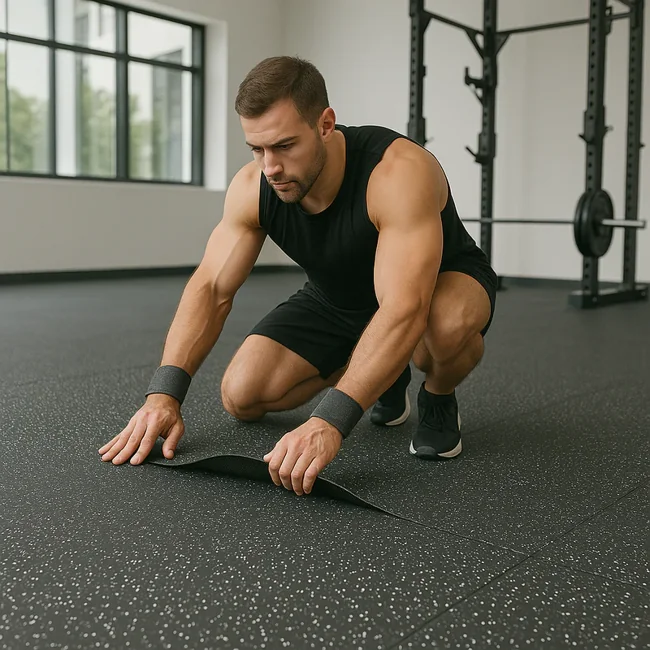
Contrast Workouts with Contrast Flooring
Not all gym activities are created equal and neither are flooring requirements. It’s the equivalent of doing heavy deadlifts on a yoga mat or doing yoga on concrete. It doesn’t make sense. Which is why you will, naturally, want to first match your floor to your workout.
Flooring for Weightlifting
In weightlifting areas, you need flooring with impact-absorbing qualities. Dropping heavy barbells onto feeble flooring will ruin both the flooring and your joints. Now let’s bring Rubber interlocking Tiles — or thick rubber rolls — into the mix, which are the cushiony saviors of the day, because they are shock-absorbent, will protect the floor, and decrease your overall volume.
Cardio and Functional Fitness Flooring
Cardio classes are all about constantly moving your body, whether that means running on a treadmill, spinning on a bike or hopping around in a very sweaty HIIT class. In those parts, it’s a matter of slip resistance and durability. You may also want to try rubber flooring or interlocking EVA foam tiles, which have a mixture of comfort and grip.
Yoga and Stretching Zone Flooring
For yoga, pilates and stretching, opt for softer floors for cushion and comfort. Eva foam floor mats or padded floor mats make sure that the knees and elbows are comfortable.
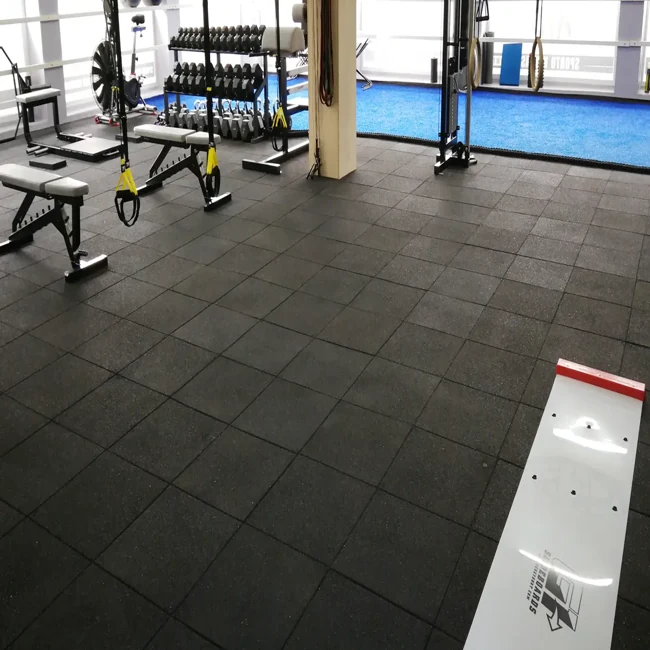
Cheap Flooring What Are You Really Paying For?
The most affordable flooring is easy to fall into and tempting to order, especially when you’re trying to set up a gym and have lots of costs to recover. But when it comes to gym flooring, “cheap” is typically the most expensive in the long run because the old practice is outdated. You do, in fact, get what you pay for. A poor-quality mat goes torn in no time, hitting the peeling/distorted route after a few months of heavy usage.
Balancing Quality with Budget
It should not be a goal to spend the most money, but to spend a reasonable amount for a balanced price-to-quality ratio. Stay away from cutting corners and look for flooring that is strong and designed for gyms. Rubber Tiles for instance, may require a higher upfront investment, but they can last for many years with proper maintenance.
The Cost Saving Advantages of Quality Gym Floor Coverings Over Time
Think of flooring as insurance. We all know that good flooring helps insulate your gear, poses less of an injury risk and reduces the frequency of replacements. Over the long run, that saves money and nerves vs. having to constantly swap out cheap mats.
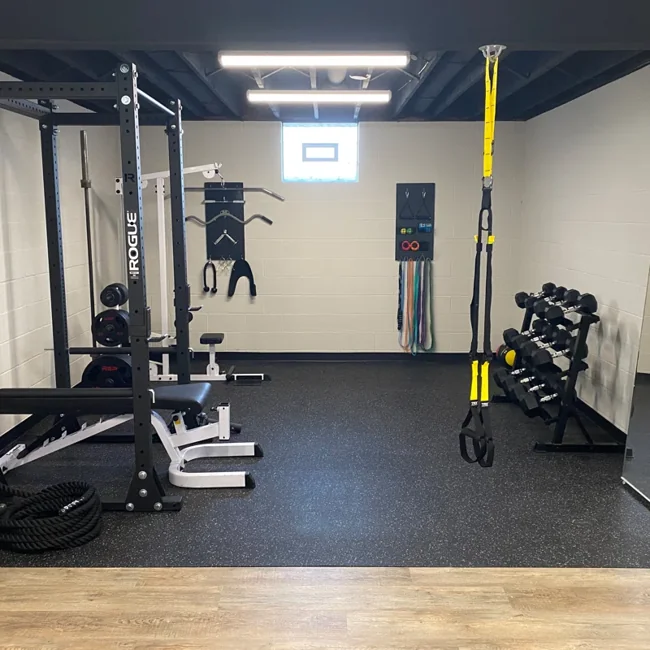
Why Shock Absorption Matters
When you jump, or sprint, or lift a load, your body and the ground take on the load together. Without sufficient shock absorption, you’re left with sore joints and a damaged floor. This is the reason that Gym Floors Dubai must have the capacity to absorb and diffuse impacts.
Well-Protect Your Joint & Not Hurt Your Skin
Poor flooring can lead to sore knees, achy backs, and even chronic joint conditions. By choosing shock-absorbing floorings with like an EPDM (ethylene propylene diene monomer (M-Class) layer or rubber tiles, you ensure that not only your body, but also your eye for quality is unharmed.
Certificates of safety—you should check That it Has
Not all floors are created equal. Find flooring that meets or exceeds safety standards like slip resistance (if tested) or shock absorption (if rated). This means you’re receiving a product that was tested in the real gym environment.
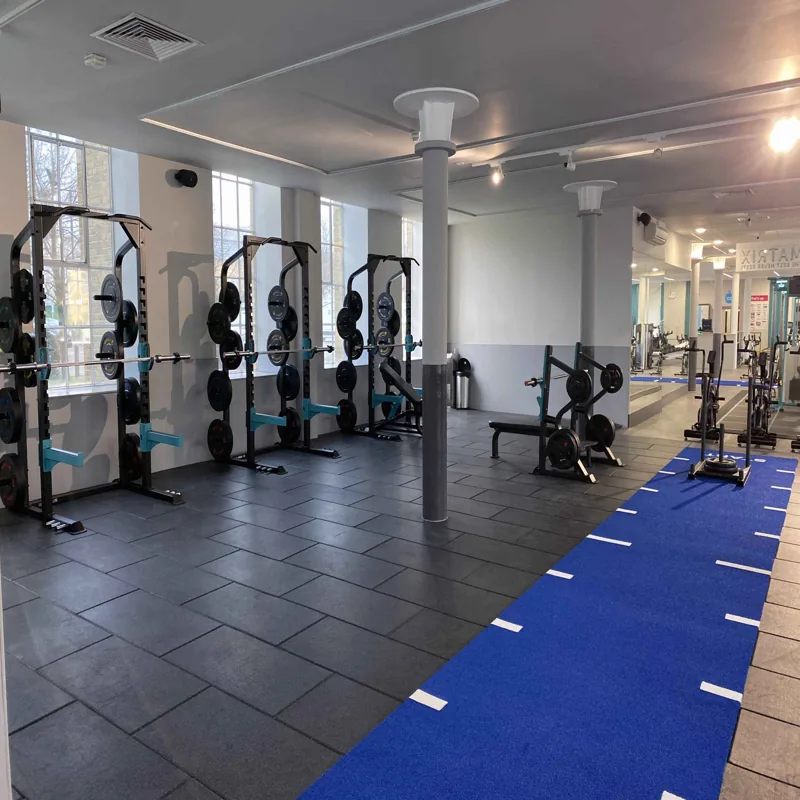
Busy Gyms vs. Home Gyms
The flooring that is ideal for a Small Home Gym might not be durable under foot traffic in a commercial gym. Home gyms can probably get away with EVA Foam Mats but commercial gyms should have Heavy-Duty Rubber or EPDM flooring.
Easy-to-Clean Flooring Options
Most gyms suffer from a lot of sweat, dirt and germs each day. It’s also crucial to choose a kind of floor that you can easily clean. Rubber Tiles for example, can be wiped down or mopped, and while some less expensive mats absorb sweat and odors, that makes them unsanitary.
Replacing vs. Repairing Tiles
Sustainable also means planning ahead for repairs. And it is possible that some of these tiles may become damaged over time. In such cases, a selection of spare tiles will be available for replacement purposes. And if only a portion of a roll becomes damaged the full section of tile would have to be replaced.
Impacts on noisy levels based on the type of flooring
Regardless of whether it has to be placed, you enjoy, weights, steps, and machines all over means there’s a lot of noise. Good Gym Floors especially ones that are rubber-based, won’t ever make sound and vibration, and the gym will feel good in general for everybody.
Gym Flooring That Looks Good
An extremely well-made gymnasium floor, bold, clean lines, and bright colors can transform any area. It’s bringing a professional, welcoming atmosphere that makes you want to serve the users.
Yes, it’s true: The flooring can affect your workout moods. Bright, crisp floors can invigorate, while dingy floors can be a bummer. Think of your floor as the foundation for the mood of your gym.
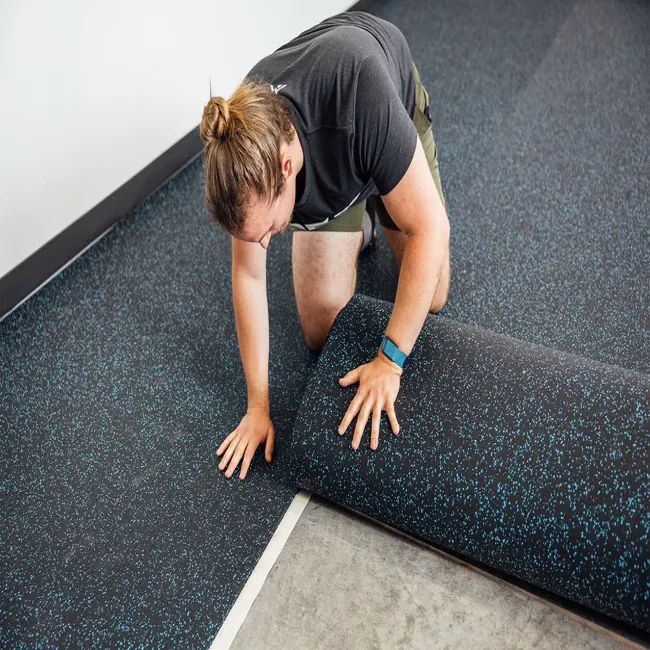
Assess Your Workout Style
Start by figuring out what kind of training you or your clients are probably doing. A bodybuilder will require a different type of flooring than someone focusing their workout on yoga or the other focusing on aerobics.
Consider Durability Safety Comfort
Both durability and safety are non-negotiable. And comfort counts, too. You don’t want your body to feel like it’s being crushed while you’re working out.
Think About the Lifetime Cost of This Purchase Not the Immediate Outlay
Think about the long game. Floors are a relatively good home improvement project for a wise investment.
More than just a place to walk, the floor of your gym is the foundation of safety, performance and atmosphere. Don’t make the mistakes of neglecting workout requirements, price match, skipping on safety features, compromising on stability, or ignoring look!
The ideal gym flooring transforms an ordinary gym into an extraordinary, user-friendly fitness center. Whether you are trying to get a home gym or a commercial fitness center, every workout is better with the right flooring investment.
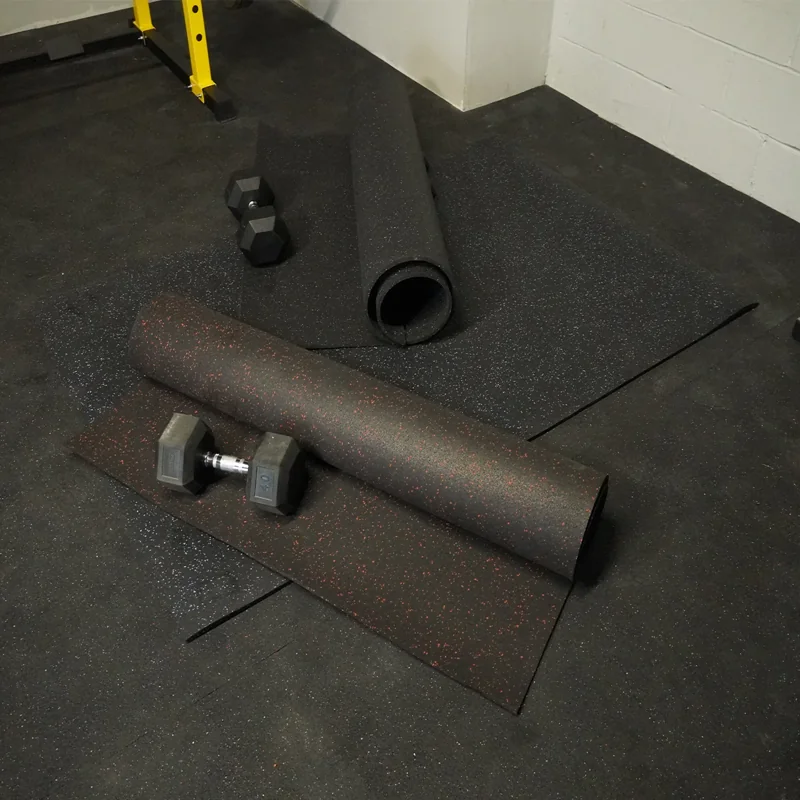
Not always. Rubber Mats are suitable for weightlifting and cardio work, while softer flooring like EVA or padded foam is most comfortable for practice like yoga.
Serving as the ideal weightlifting flooring, both tubes or dense rubber tiles absorb a large amount of the energy and decrease the amount of force impact on both the floor and gear.
Most surfaces, including lock-together rubber tiles, are DIY-friendly, so you can create them yourself. Larger roll systems may require professional installation.
Absolutely. Investing in good flooring reduces the likelihood of injury, adds comfort to your workout space, and provides motivation for your workout and, ultimately, a better workout overall.
Top 10 Reasons To Choose Rubber Flooring in Dubai Homes...
Read MoreRubber Flooring Dubai—Complete Guide To Benefits Types & Prices Rubber...
Read MoreHow To Install Rubber Sheet Flooring Like a Pro |...
Read MoreHow to Choose Affordable & Strong Garage Flooring in Dubai...
Read More